Target Information
| Target General Information | Top | |||||
|---|---|---|---|---|---|---|
| Target ID |
T25956
(Former ID: TTDI02489)
|
|||||
| Target Name |
Histone acetyltransferase p300 (EP300)
|
|||||
| Synonyms |
p300 HAT; Protein propionyltransferase p300; P300; Histone crotonyltransferase p300; Histone butyryltransferase p300; E1Aassociated protein p300; E1A-associated protein p300
Click to Show/Hide
|
|||||
| Gene Name |
EP300
|
|||||
| Target Type |
Clinical trial target
|
[1] | ||||
| Disease | [+] 2 Target-related Diseases | + | ||||
| 1 | Solid tumour/cancer [ICD-11: 2A00-2F9Z] | |||||
| 2 | Prostate cancer [ICD-11: 2C82] | |||||
| Function |
Acetylates all four core histones in nucleosomes. Histone acetylation gives an epigenetic tag for transcriptional activation. Mediates cAMP-gene regulation by binding specifically to phosphorylated CREB protein. Mediates acetylation of histone H3 at 'Lys-122' (H3K122ac), a modification that localizes at the surface of the histone octamer and stimulates transcription, possibly by promoting nucleosome instability. Mediates acetylation of histone H3 at 'Lys-27' (H3K27ac). Also functions as acetyltransferase for non-histone targets, such as ALX1, HDAC1, PRMT1 or SIRT2. Acetylates 'Lys-131' of ALX1 and acts as its coactivator. Acetylates SIRT2 and is proposed to indirectly increase the transcriptional activity of TP53 through acetylation and subsequent attenuation of SIRT2 deacetylase function. Acetylates HDAC1 leading to its inactivation and modulation of transcription. Acts as a TFAP2A-mediated transcriptional coactivator in presence of CITED2. Plays a role as a coactivator of NEUROD1-dependent transcription of the secretin and p21 genes and controls terminal differentiation of cells in the intestinal epithelium. Promotes cardiac myocyte enlargement. Can also mediate transcriptional repression. Acetylates FOXO1 and enhances its transcriptional activity. Acetylates BCL6 wich disrupts its ability to recruit histone deacetylases and hinders its transcriptional repressor activity. Participates in CLOCK or NPAS2-regulated rhythmic gene transcription; exhibits a circadian association with CLOCK or NPAS2, correlating with increase in PER1/2 mRNA and histone H3 acetylation on the PER1/2 promoter. Acetylates MTA1 at 'Lys-626' which is essential for its transcriptional coactivator activity. Acetylates XBP1 isoform 2; acetylation increases protein stability of XBP1 isoform 2 and enhances its transcriptional activity. Acetylates PCNA; acetylation promotes removal of chromatin-bound PCNA and its degradation during nucleotide excision repair (NER). Acetylates MEF2D. Acetylates and stabilizes ZBTB7B protein by antagonizing ubiquitin conjugation and degragation, this mechanism may be involved in CD4/CD8 lineage differentiation. In addition to protein acetyltransferase, can use different acyl-CoA substrates, such as (2E)-butenoyl-CoA (crotonyl-CoA), butanoyl-CoA (butyryl-CoA) or propanoyl-CoA (propionyl-CoA), and is able to mediate protein crotonylation, butyrylation or propionylation, respectively. Acts as a histone crotonyltransferase; crotonylation marks active promoters and enhancers and confers resistance to transcriptional repressors. Histone crotonyltransferase activity is dependent on the concentration of (2E)-butenoyl-CoA (crotonyl-CoA) substrate and such activity is weak when (E)-but-2-enoyl-CoA (crotonyl-CoA) concentration is low. Also acts as a histone butyryltransferase; butyrylation marks active promoters. Functions as a transcriptional coactivator for SMAD4 in the TGF-beta signaling pathway. Acetylates PCK1 and promotes PCK1 anaplerotic activity. Functions as histone acetyltransferase and regulates transcription via chromatin remodeling.
Click to Show/Hide
|
|||||
| BioChemical Class |
Acyltransferase
|
|||||
| UniProt ID | ||||||
| EC Number |
EC 2.3.1.48
|
|||||
| Sequence |
MAENVVEPGPPSAKRPKLSSPALSASASDGTDFGSLFDLEHDLPDELINSTELGLTNGGD
INQLQTSLGMVQDAASKHKQLSELLRSGSSPNLNMGVGGPGQVMASQAQQSSPGLGLINS MVKSPMTQAGLTSPNMGMGTSGPNQGPTQSTGMMNSPVNQPAMGMNTGMNAGMNPGMLAA GNGQGIMPNQVMNGSIGAGRGRQNMQYPNPGMGSAGNLLTEPLQQGSPQMGGQTGLRGPQ PLKMGMMNNPNPYGSPYTQNPGQQIGASGLGLQIQTKTVLSNNLSPFAMDKKAVPGGGMP NMGQQPAPQVQQPGLVTPVAQGMGSGAHTADPEKRKLIQQQLVLLLHAHKCQRREQANGE VRQCNLPHCRTMKNVLNHMTHCQSGKSCQVAHCASSRQIISHWKNCTRHDCPVCLPLKNA GDKRNQQPILTGAPVGLGNPSSLGVGQQSAPNLSTVSQIDPSSIERAYAALGLPYQVNQM PTQPQVQAKNQQNQQPGQSPQGMRPMSNMSASPMGVNGGVGVQTPSLLSDSMLHSAINSQ NPMMSENASVPSLGPMPTAAQPSTTGIRKQWHEDITQDLRNHLVHKLVQAIFPTPDPAAL KDRRMENLVAYARKVEGDMYESANNRAEYYHLLAEKIYKIQKELEEKRRTRLQKQNMLPN AAGMVPVSMNPGPNMGQPQPGMTSNGPLPDPSMIRGSVPNQMMPRITPQSGLNQFGQMSM AQPPIVPRQTPPLQHHGQLAQPGALNPPMGYGPRMQQPSNQGQFLPQTQFPSQGMNVTNI PLAPSSGQAPVSQAQMSSSSCPVNSPIMPPGSQGSHIHCPQLPQPALHQNSPSPVPSRTP TPHHTPPSIGAQQPPATTIPAPVPTPPAMPPGPQSQALHPPPRQTPTPPTTQLPQQVQPS LPAAPSADQPQQQPRSQQSTAASVPTPTAPLLPPQPATPLSQPAVSIEGQVSNPPSTSST EVNSQAIAEKQPSQEVKMEAKMEVDQPEPADTQPEDISESKVEDCKMESTETEERSTELK TEIKEEEDQPSTSATQSSPAPGQSKKKIFKPEELRQALMPTLEALYRQDPESLPFRQPVD PQLLGIPDYFDIVKSPMDLSTIKRKLDTGQYQEPWQYVDDIWLMFNNAWLYNRKTSRVYK YCSKLSEVFEQEIDPVMQSLGYCCGRKLEFSPQTLCCYGKQLCTIPRDATYYSYQNRYHF CEKCFNEIQGESVSLGDDPSQPQTTINKEQFSKRKNDTLDPELFVECTECGRKMHQICVL HHEIIWPAGFVCDGCLKKSARTRKENKFSAKRLPSTRLGTFLENRVNDFLRRQNHPESGE VTVRVVHASDKTVEVKPGMKARFVDSGEMAESFPYRTKALFAFEEIDGVDLCFFGMHVQE YGSDCPPPNQRRVYISYLDSVHFFRPKCLRTAVYHEILIGYLEYVKKLGYTTGHIWACPP SEGDDYIFHCHPPDQKIPKPKRLQEWYKKMLDKAVSERIVHDYKDIFKQATEDRLTSAKE LPYFEGDFWPNVLEESIKELEQEEEERKREENTSNESTDVTKGDSKNAKKKNNKKTSKNK SSLSRGNKKKPGMPNVSNDLSQKLYATMEKHKEVFFVIRLIAGPAANSLPPIVDPDPLIP CDLMDGRDAFLTLARDKHLEFSSLRRAQWSTMCMLVELHTQSQDRFVYTCNECKHHVETR WHCTVCEDYDLCITCYNTKNHDHKMEKLGLGLDDESNNQQAAATQSPGDSRRLSIQRCIQ SLVHACQCRNANCSLPSCQKMKRVVQHTKGCKRKTNGGCPICKQLIALCCYHAKHCQENK CPVPFCLNIKQKLRQQQLQHRLQQAQMLRRRMASMQRTGVVGQQQGLPSPTPATPTTPTG QQPTTPQTPQPTSQPQPTPPNSMPPYLPRTQAAGPVSQGKAAGQVTPPTPPQTAQPPLPG PPPAAVEMAMQIQRAAETQRQMAHVQIFQRPIQHQMPPMTPMAPMGMNPPPMTRGPSGHL EPGMGPTGMQQQPPWSQGGLPQPQQLQSGMPRPAMMSVAQHGQPLNMAPQPGLGQVGISP LKPGTVSQQALQNLLRTLRSPSSPLQQQQVLSILHANPQLLAAFIKQRAAKYANSNPQPI PGQPGMPQGQPGLQPPTMPGQQGVHSNPAMQNMNPMQAGVQRAGLPQQQPQQQLQPPMGG MSPQAQQMNMNHNTMPSQFRDILRRQQMMQQQQQQGAGPGIGPGMANHNQFQQPQGVGYP PQQQQRMQHHMQQMQQGNMGQIGQLPQALGAEAGASLQAYQQRLLQQQMGSPVQPNPMSP QQHMLPNQAQSPHLQGQQIPNSLSNQVRSPQPVPSPRPQSQPPHSSPSPRMQPQPSPHHV SPQTSSPHPGLVAAQANPMEQGHFASPDQNSMLSQLASNPGMANLHGASATDLGLSTDNS DLNSNLSQSTLDIH Click to Show/Hide
|
|||||
| 3D Structure | Click to Show 3D Structure of This Target | AlphaFold | ||||
| HIT2.0 ID | T41SFE | |||||
| Drugs and Modes of Action | Top | |||||
|---|---|---|---|---|---|---|
| Clinical Trial Drug(s) | [+] 2 Clinical Trial Drugs | + | ||||
| 1 | CCS1477 | Drug Info | Phase 1/2 | Solid tumour/cancer | [2] | |
| 2 | FT-7051 | Drug Info | Phase 1 | Prostate cancer | [3] | |
| Mode of Action | [+] 1 Modes of Action | + | ||||
| Inhibitor | [+] 2 Inhibitor drugs | + | ||||
| 1 | CCS1477 | Drug Info | [4] | |||
| 2 | FT-7051 | Drug Info | [5] | |||
| Cell-based Target Expression Variations | Top | |||||
|---|---|---|---|---|---|---|
| Cell-based Target Expression Variations | ||||||
| Drug Binding Sites of Target | Top | |||||
|---|---|---|---|---|---|---|
| Ligand Name: propionyl-CoA | Ligand Info | |||||
| Structure Description | Crystal structure of the p300 acetyltransferase catalytic core with propionyl-coenzyme A. | PDB:5LKX | ||||
| Method | X-ray diffraction | Resolution | 2.52 Å | Mutation | Yes | [6] |
| PDB Sequence |
KKIFKPEELR
1055 QALMPTLEAL1065 YRQDPESLPF1075 RQPVDPQLLG1085 IPDYFDIVKS1095 PMDLSTIKRK 1105 LDTGQYQEPW1115 QYVDDIWLMF1125 NNAWLYNRKT1135 SRVYKYCSKL1145 SEVFEQEIDP 1155 VMQSLGYCCG1165 RKLEFSPQTL1175 CCYGKQLCTI1185 PRDATYYSYQ1195 NRYHFCEKCF 1205 NEIQGESVSL1215 GQTTINKEQF1231 SKRKNDTLDP1241 ELFVECTECG1251 RKMHQICVLH 1261 HEIIWPAGFV1271 CDGCLKKSAR1281 TRKENKFSAK1291 RLPSTRLGTF1301 LENRVNDFLR 1311 RQNHPESGEV1321 TVRVVHASDK1331 TVEVKPGMKA1341 RFVDSGEMAE1351 SFPYRTKALF 1361 AFEEIDGVDL1371 CFFGMHVQEY1381 GSDCPPPNQR1391 RVYISYLDSV1401 HFFRPKCLRT 1411 AVYHEILIGY1421 LEYVKKLGYT1431 TGHIWACPPS1441 EGDDYIFHCH1451 PPDQKIPKPK 1461 RLQEWFKKML1471 DKAVSERIVH1481 DYKDIFKQAT1491 EDRLTSAKEL1501 PYFEGDFWPN 1511 VLEESIKESG1521 GSGSQKLYAT1587 MEKHKEVFFV1597 IRLIAGPAAN1607 SLPPIVDPDP 1617 LIPCDLMDGR1627 DAFLTLARDK1637 HLEFSSLRRA1647 QWSTMCMLVE1657 LHTQ |
|||||
|
|
PHE1374
4.974
TYR1394
4.995
ILE1395
4.007
SER1396
3.337
TYR1397
3.724
LEU1398
3.007
ASP1399
3.602
SER1400
2.628
ARG1410
2.794
THR1411
2.744
TYR1414
3.447
TRP1436
3.436
ALA1437
4.177
CYS1438
3.242
|
|||||
| Ligand Name: Acetyl CoA | Ligand Info | |||||
| Structure Description | Crystal structure of p300 histone acetyltransferase domain in complex with Acetyl-Coenzyme A | PDB:4PZS | ||||
| Method | X-ray diffraction | Resolution | 1.94 Å | Mutation | Yes | [7] |
| PDB Sequence |
KFSAKRLPST
1296 RLGTFLENRV1306 NDFLRRQNHP1316 ESGEVTVRVV1326 HASDKTVEVK1336 PGMKARFVDS 1346 GEMAESFPYR1356 TKALFAFEEI1366 DGVDLCFFGM1376 HVQEYGSDCP1386 PPNQRRVYIS 1396 YLDSVHFFRP1406 KCLRTAVYHE1416 ILIGYLEYVK1426 KLGYTTGHIW1436 ACPPSEGDDY 1446 IFHCHPPDQK1456 IPKPKRLQEW1466 FKKMLDKAVS1476 ERIVHDYKDI1486 FKQATEDRLT 1496 SAKELPYFEG1506 DFWPNVLEES1516 IKELEQEEEE1526 RKREENTSDL1580 SQKLYATMEK 1590 HKEVFFVIRL1600 IAGPAANSLP1610 PIVDPDPLIP1620 CDLMDGRDAF1630 LTLARDKHLE 1640 FSSLRRAQWS1650 TMCMLVELHT1660 QSQD
|
|||||
|
|
ILE1395
3.049
SER1396
4.425
TYR1397
3.514
LEU1398
3.032
ASP1399
3.690
SER1400
2.766
LYS1407
4.853
ARG1410
2.813
THR1411
2.603
TYR1414
3.256
ILE1435
4.240
TRP1436
3.178
ALA1437
4.778
|
|||||
| Click to View More Binding Site Information of This Target with Different Ligands | ||||||
| Different Human System Profiles of Target | Top |
|---|---|
|
Human Similarity Proteins
of target is determined by comparing the sequence similarity of all human proteins with the target based on BLAST. The similarity proteins for a target are defined as the proteins with E-value < 0.005 and outside the protein families of the target.
A target that has fewer human similarity proteins outside its family is commonly regarded to possess a greater capacity to avoid undesired interactions and thus increase the possibility of finding successful drugs
(Brief Bioinform, 21: 649-662, 2020).
Human Tissue Distribution
of target is determined from a proteomics study that quantified more than 12,000 genes across 32 normal human tissues. Tissue Specificity (TS) score was used to define the enrichment of target across tissues.
The distribution of targets among different tissues or organs need to be taken into consideration when assessing the target druggability, as it is generally accepted that the wider the target distribution, the greater the concern over potential adverse effects
(Nat Rev Drug Discov, 20: 64-81, 2021).
Human Pathway Affiliation
of target is determined by the life-essential pathways provided on KEGG database. The target-affiliated pathways were defined based on the following two criteria (a) the pathways of the studied target should be life-essential for both healthy individuals and patients, and (b) the studied target should occupy an upstream position in the pathways and therefore had the ability to regulate biological function.
Targets involved in a fewer pathways have greater likelihood to be successfully developed, while those associated with more human pathways increase the chance of undesirable interferences with other human processes
(Pharmacol Rev, 58: 259-279, 2006).
Biological Network Descriptors
of target is determined based on a human protein-protein interactions (PPI) network consisting of 9,309 proteins and 52,713 PPIs, which were with a high confidence score of ≥ 0.95 collected from STRING database.
The network properties of targets based on protein-protein interactions (PPIs) have been widely adopted for the assessment of target’s druggability. Proteins with high node degree tend to have a high impact on network function through multiple interactions, while proteins with high betweenness centrality are regarded to be central for communication in interaction networks and regulate the flow of signaling information
(Front Pharmacol, 9, 1245, 2018;
Curr Opin Struct Biol. 44:134-142, 2017).
Human Similarity Proteins
Human Tissue Distribution
Human Pathway Affiliation
Biological Network Descriptors
|
|
| Protein Name | Pfam ID | Percentage of Identity (%) | E value |
|---|---|---|---|
| Titin (TTN) | 23.656 (44/186) | 1.38E-04 | |
|
Note:
If a protein has TS (tissue specficity) scores at least in one tissue >= 2.5, this protein is called tissue-enriched (including tissue-enriched-but-not-specific and tissue-specific). In the plots, the vertical lines are at thresholds 2.5 and 4.
|
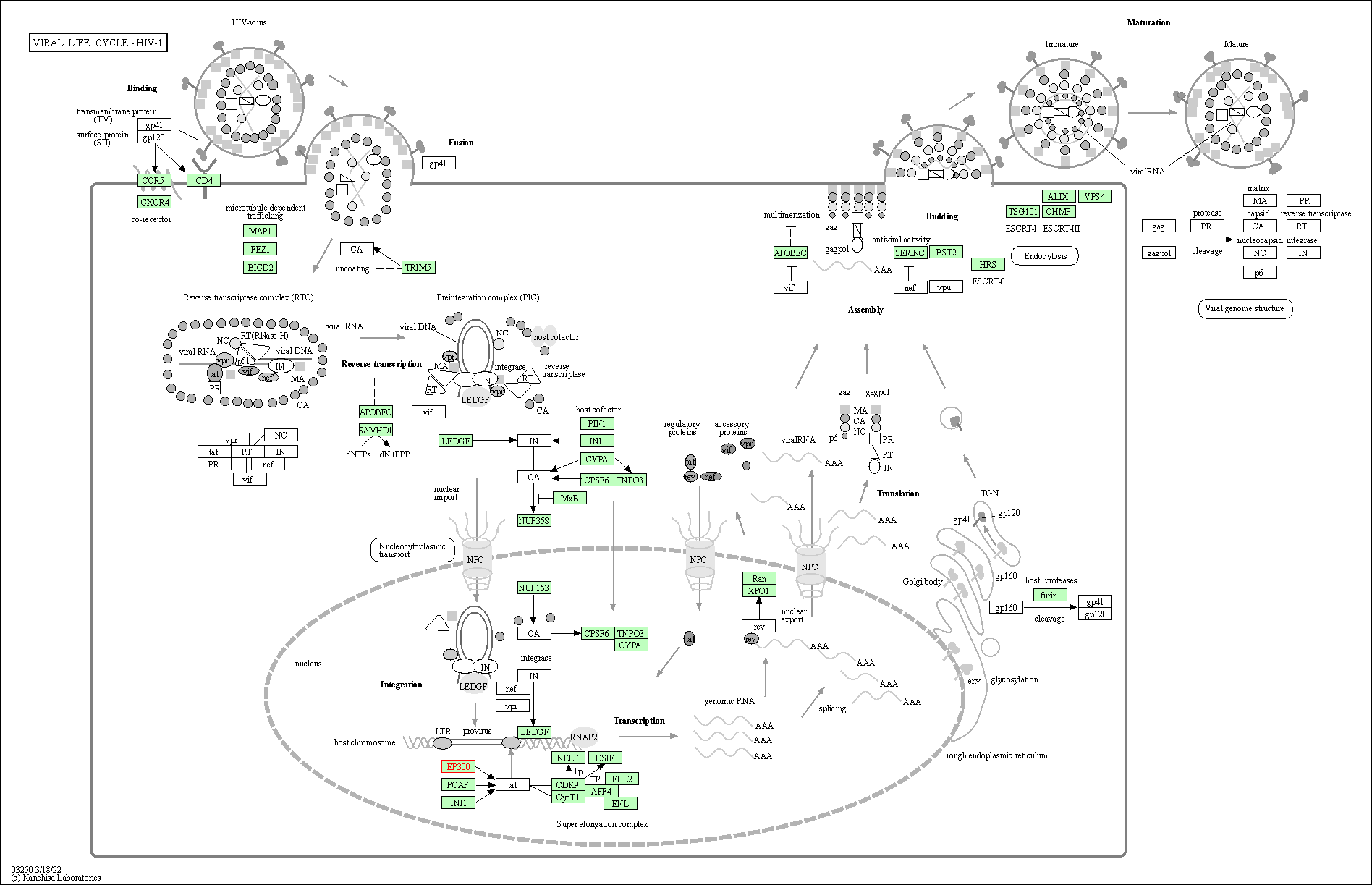
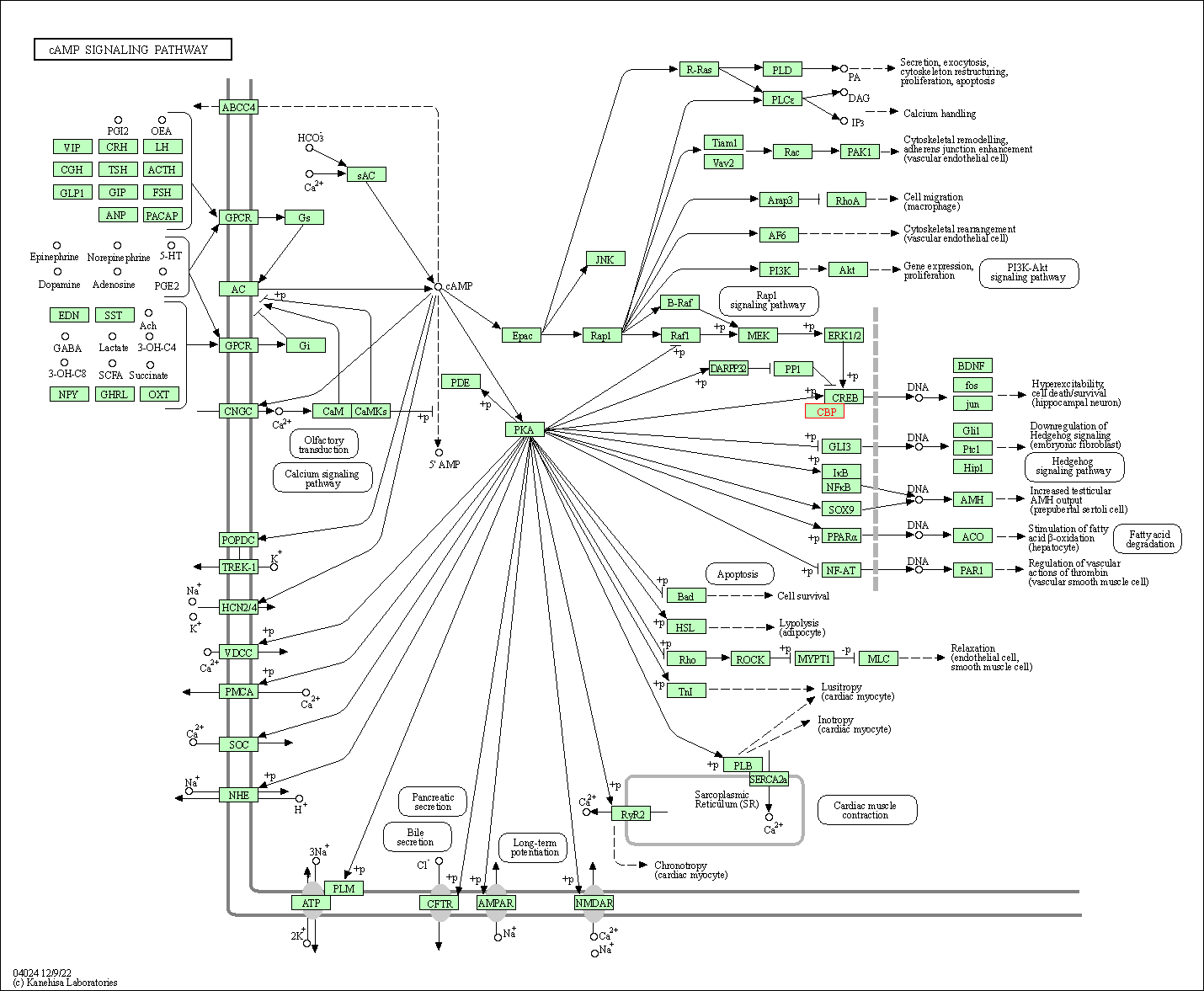
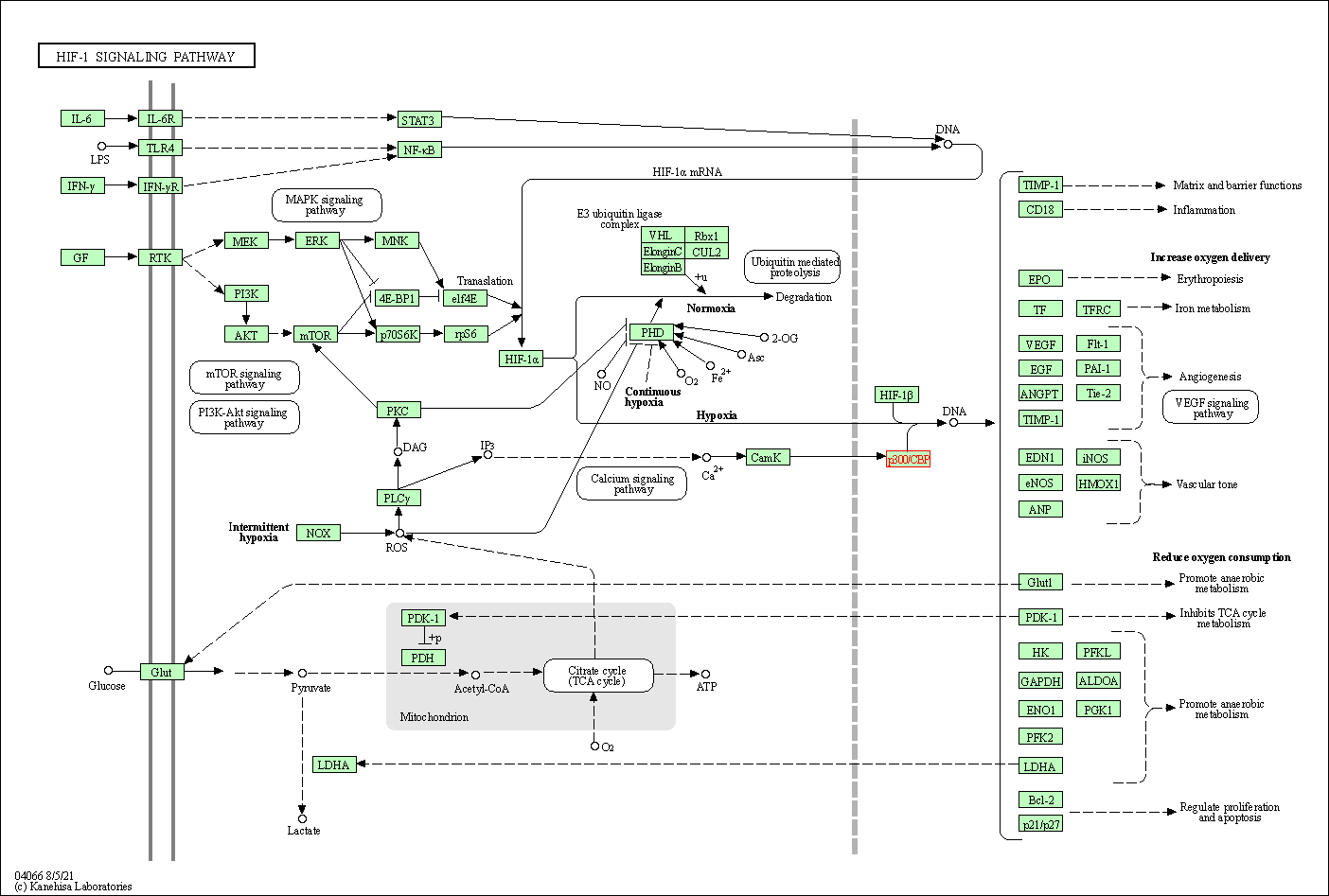
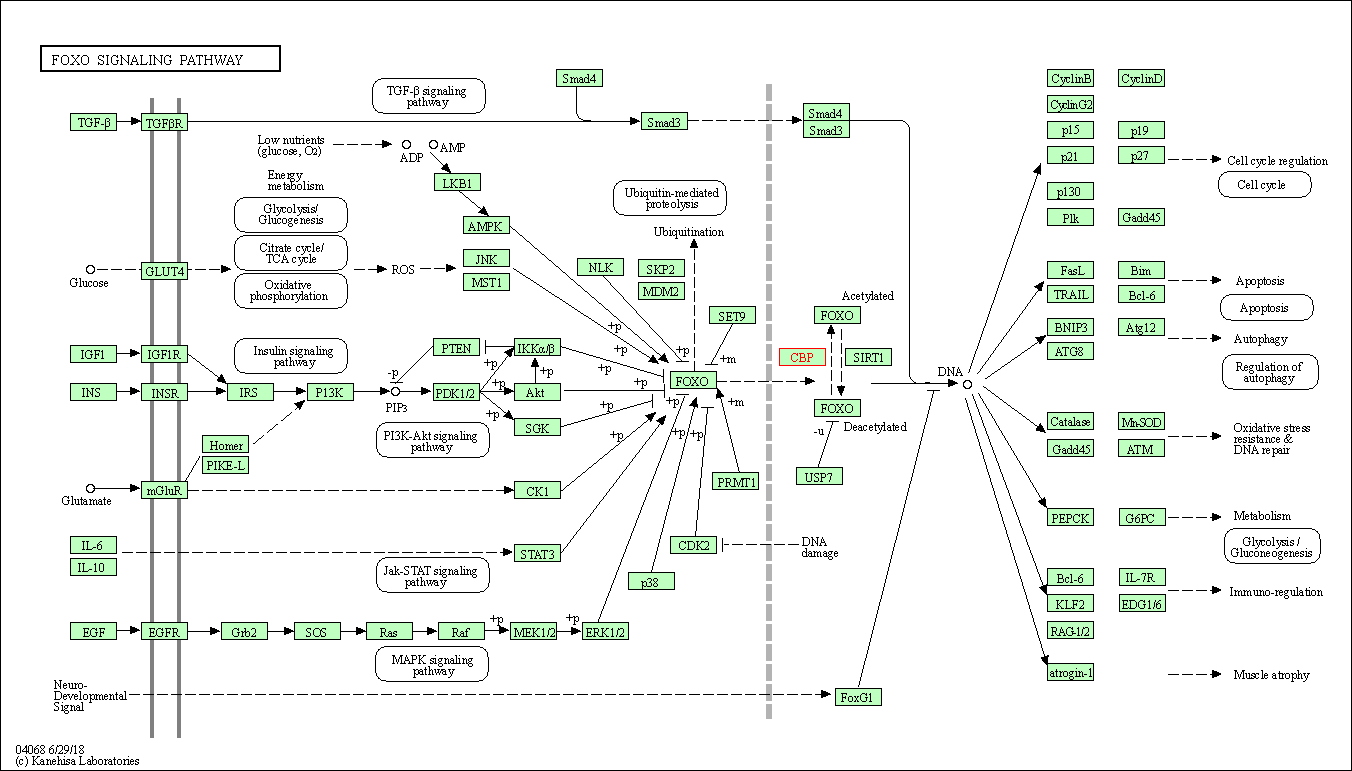
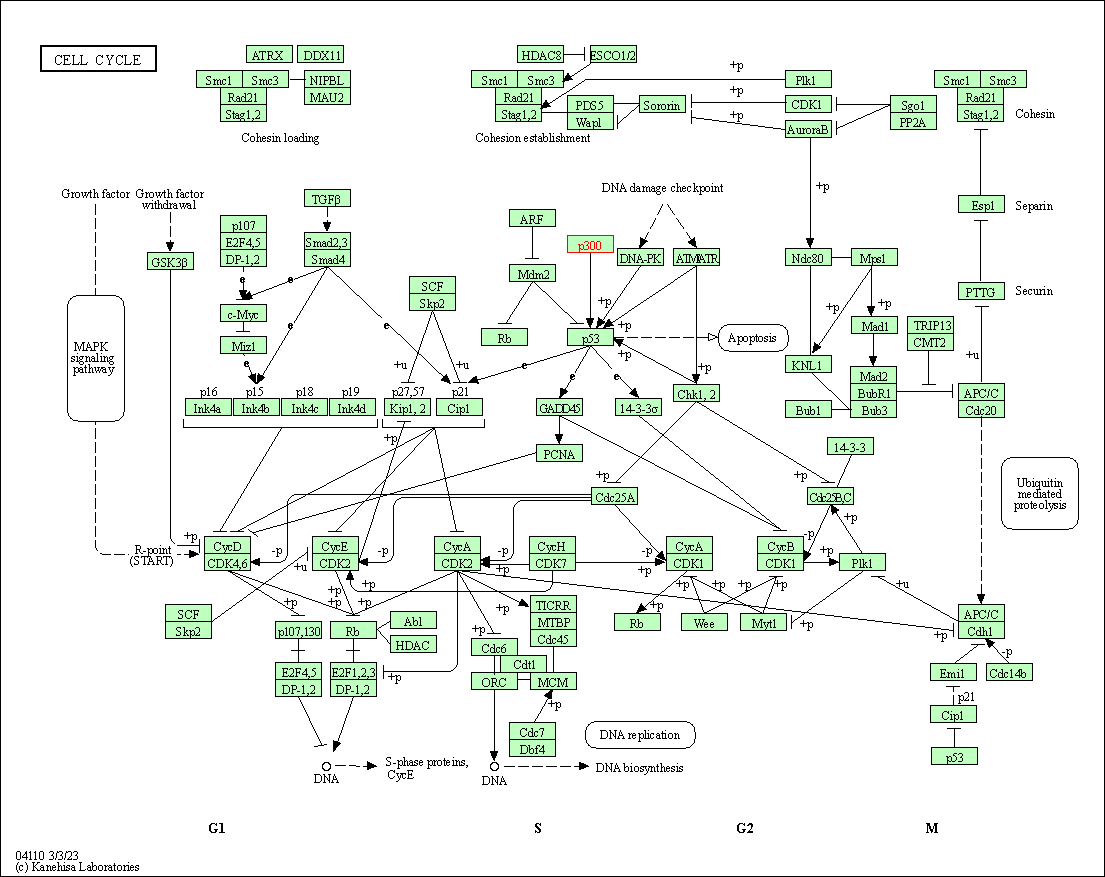
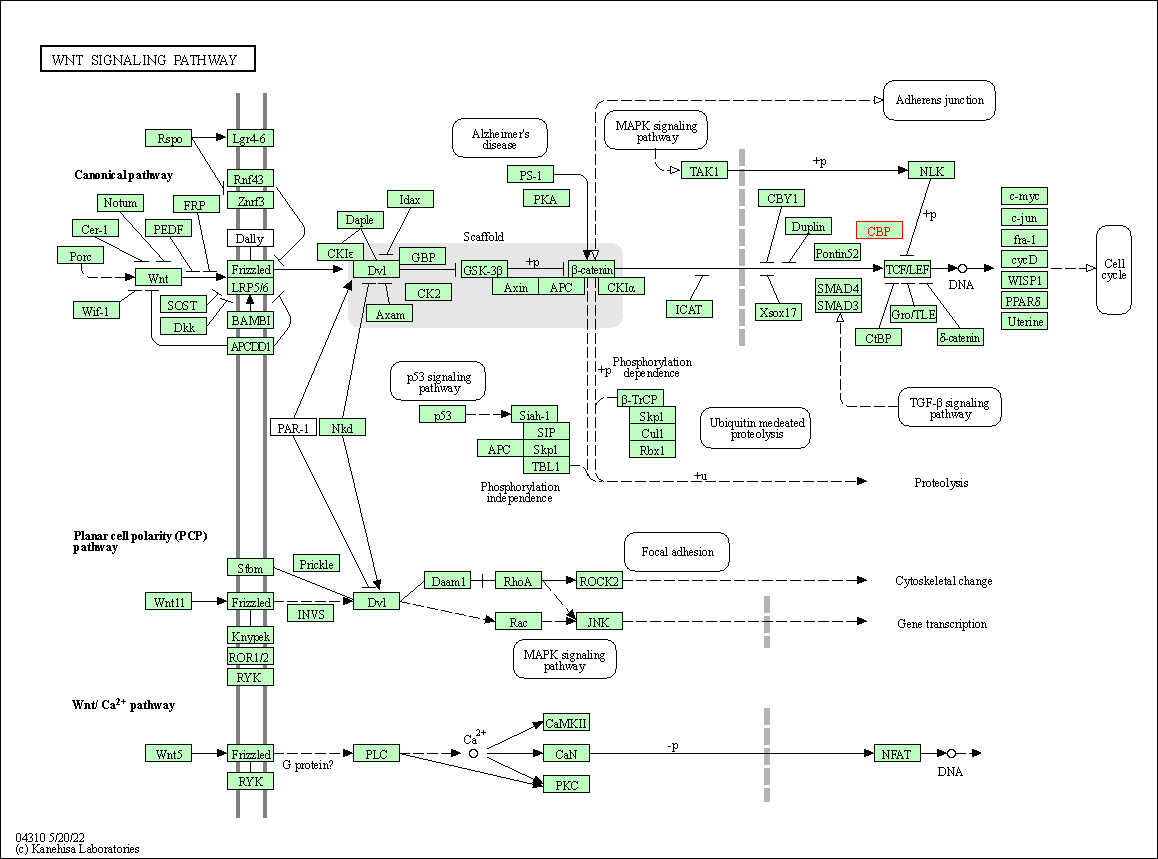
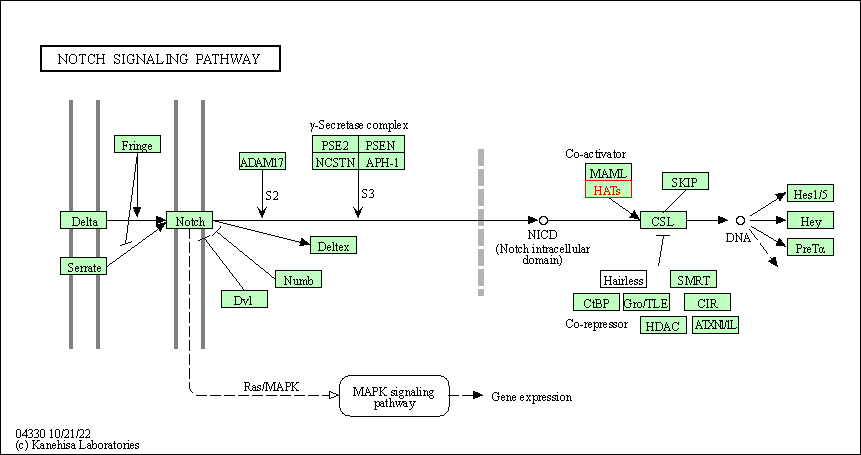
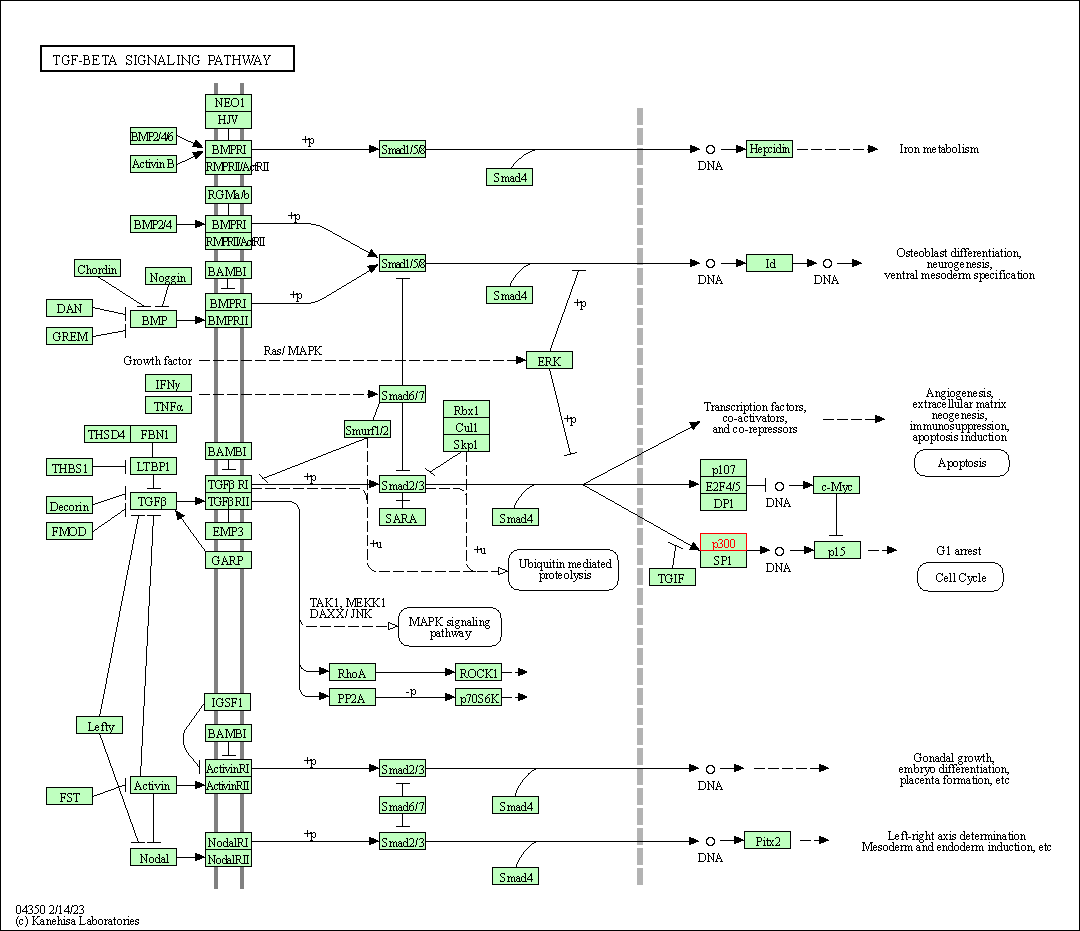

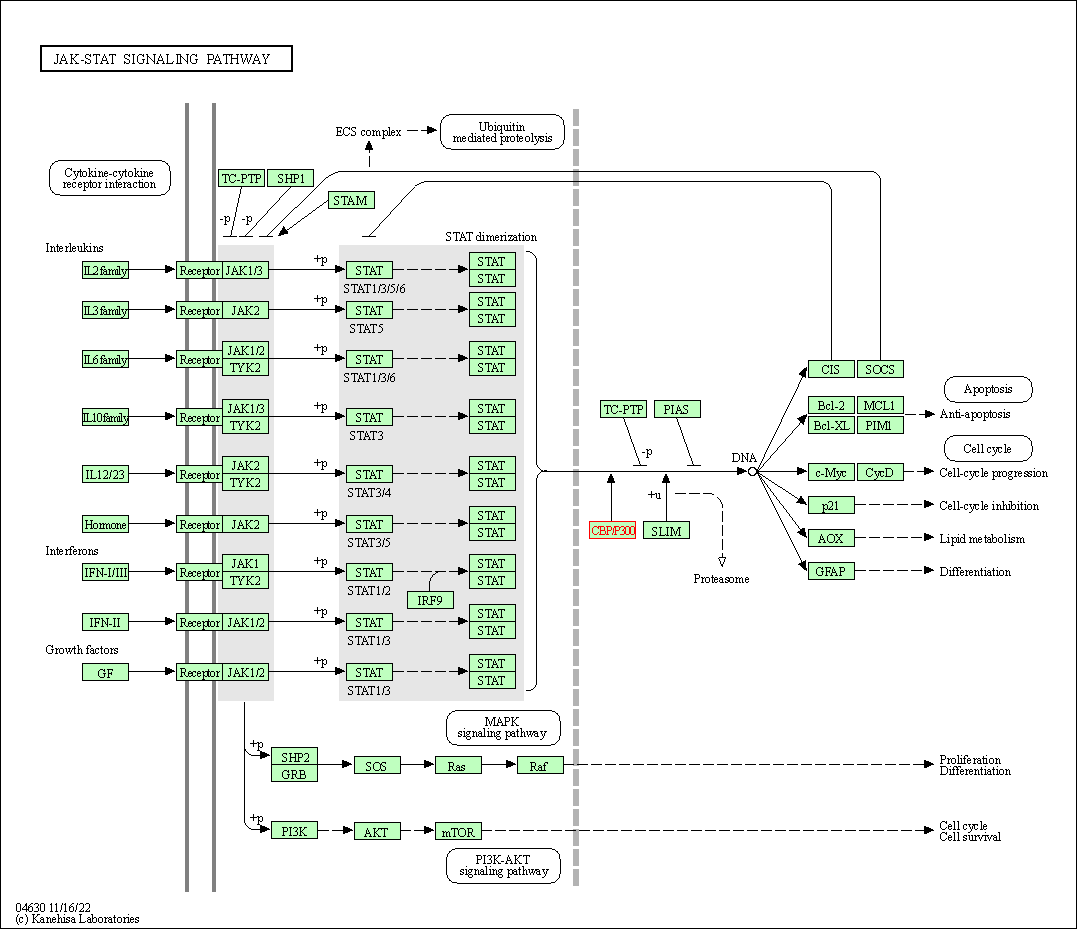

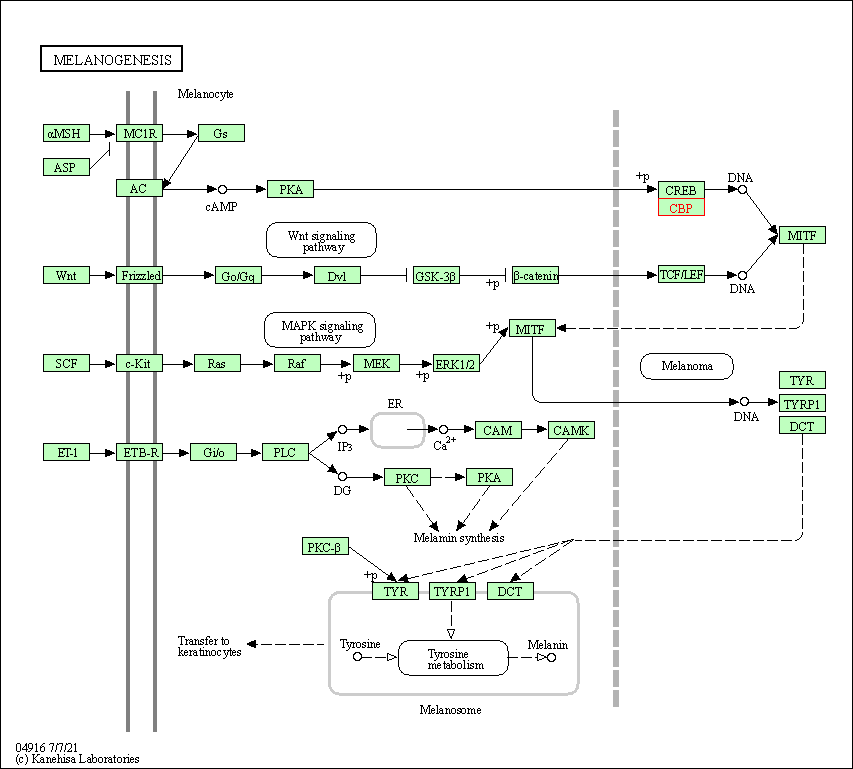
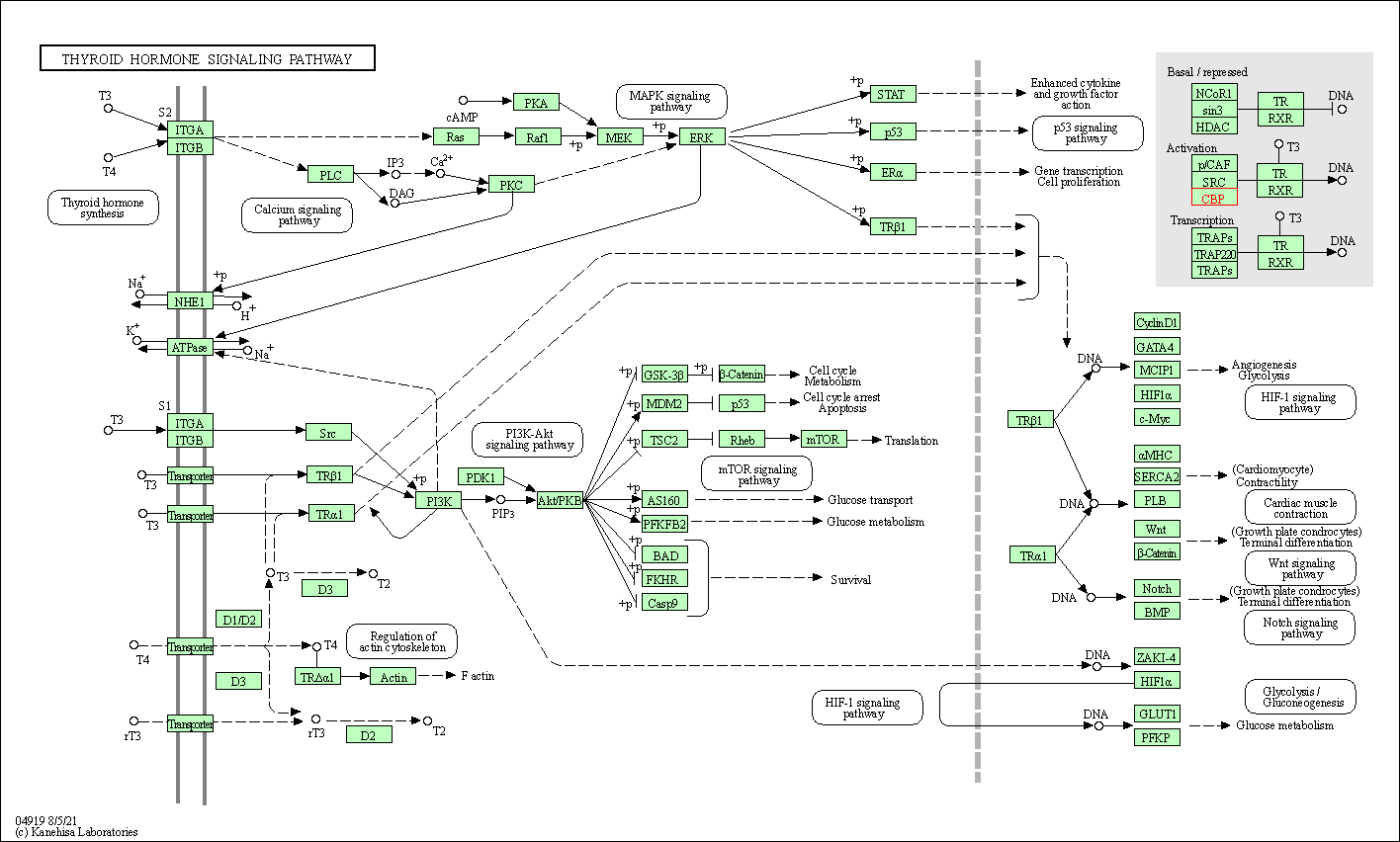
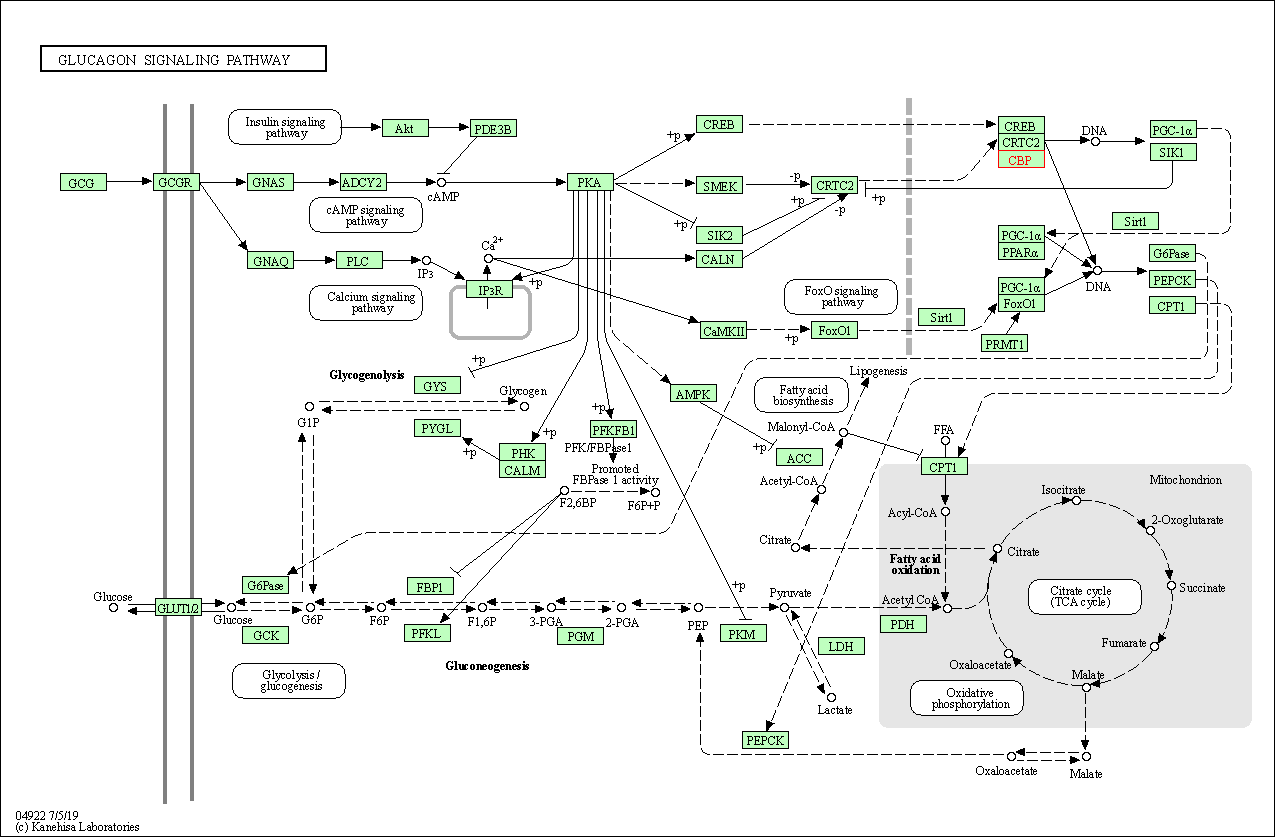
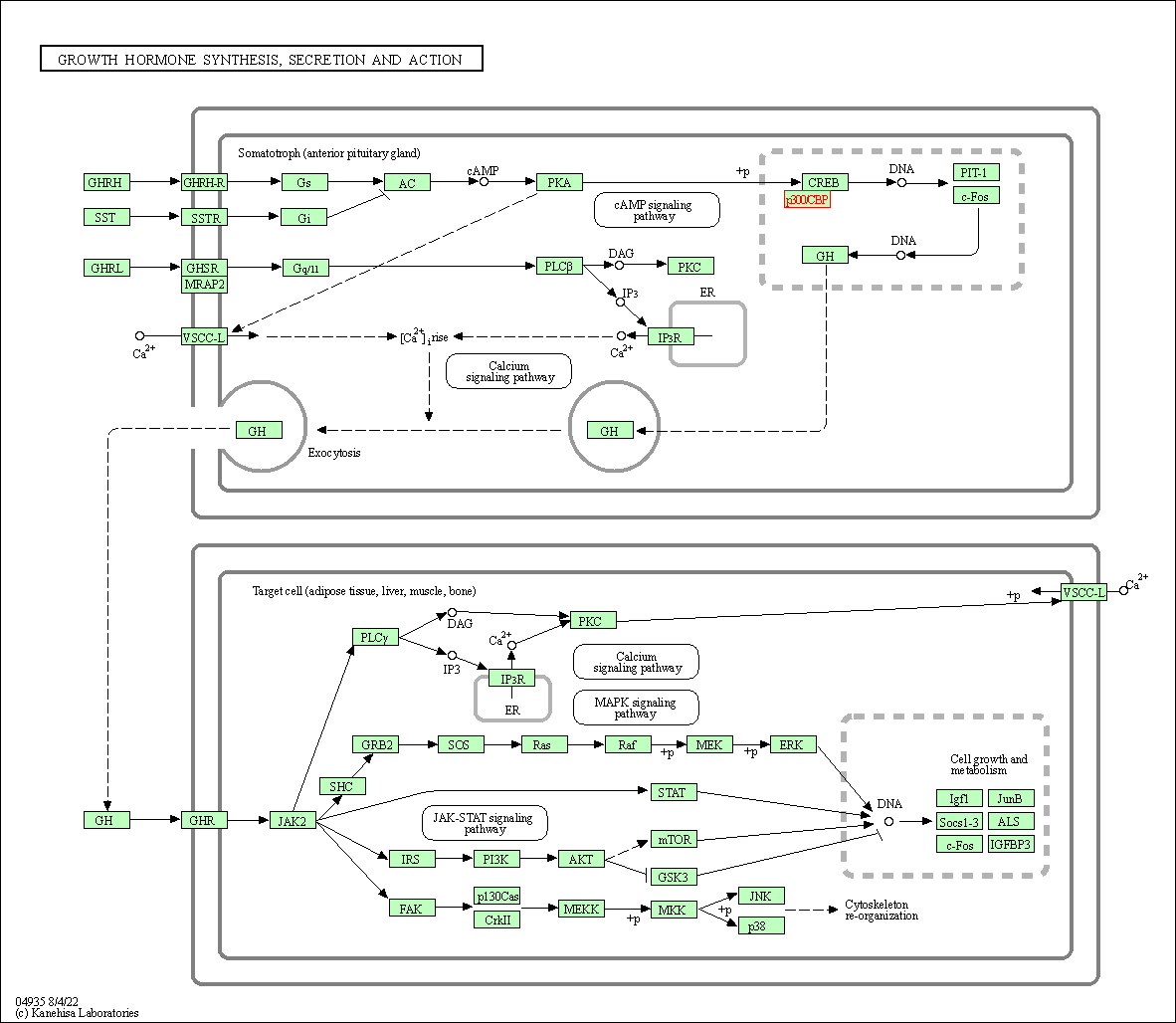
| KEGG Pathway | Pathway ID | Affiliated Target | Pathway Map |
|---|---|---|---|
| Viral life cycle - HIV-1 | hsa03250 | Affiliated Target |

|
| Class: Genetic Information Processing => Information processing in viruses | Pathway Hierarchy | ||
| cAMP signaling pathway | hsa04024 | Affiliated Target |

|
| Class: Environmental Information Processing => Signal transduction | Pathway Hierarchy | ||
| HIF-1 signaling pathway | hsa04066 | Affiliated Target |

|
| Class: Environmental Information Processing => Signal transduction | Pathway Hierarchy | ||
| FoxO signaling pathway | hsa04068 | Affiliated Target |

|
| Class: Environmental Information Processing => Signal transduction | Pathway Hierarchy | ||
| Cell cycle | hsa04110 | Affiliated Target |

|
| Class: Cellular Processes => Cell growth and death | Pathway Hierarchy | ||
| Wnt signaling pathway | hsa04310 | Affiliated Target |

|
| Class: Environmental Information Processing => Signal transduction | Pathway Hierarchy | ||
| Notch signaling pathway | hsa04330 | Affiliated Target |

|
| Class: Environmental Information Processing => Signal transduction | Pathway Hierarchy | ||
| TGF-beta signaling pathway | hsa04350 | Affiliated Target |

|
| Class: Environmental Information Processing => Signal transduction | Pathway Hierarchy | ||
| Adherens junction | hsa04520 | Affiliated Target |

|
| Class: Cellular Processes => Cellular community - eukaryotes | Pathway Hierarchy | ||
| JAK-STAT signaling pathway | hsa04630 | Affiliated Target |

|
| Class: Environmental Information Processing => Signal transduction | Pathway Hierarchy | ||
| Long-term potentiation | hsa04720 | Affiliated Target |

|
| Class: Organismal Systems => Nervous system | Pathway Hierarchy | ||
| Melanogenesis | hsa04916 | Affiliated Target |

|
| Class: Organismal Systems => Endocrine system | Pathway Hierarchy | ||
| Thyroid hormone signaling pathway | hsa04919 | Affiliated Target |

|
| Class: Organismal Systems => Endocrine system | Pathway Hierarchy | ||
| Glucagon signaling pathway | hsa04922 | Affiliated Target |

|
| Class: Organismal Systems => Endocrine system | Pathway Hierarchy | ||
| Growth hormone synthesis, secretion and action | hsa04935 | Affiliated Target |

|
| Class: Organismal Systems => Endocrine system | Pathway Hierarchy | ||
| Click to Show/Hide the Information of Affiliated Human Pathways | |||
| Degree | 150 | Degree centrality | 1.61E-02 | Betweenness centrality | 3.08E-02 |
|---|---|---|---|---|---|
| Closeness centrality | 2.89E-01 | Radiality | 1.48E+01 | Clustering coefficient | 7.49E-02 |
| Neighborhood connectivity | 3.72E+01 | Topological coefficient | 1.88E-02 | Eccentricity | 10 |
| Download | Click to Download the Full PPI Network of This Target | ||||
| Chemical Structure based Activity Landscape of Target | Top |
|---|---|
| Target Poor or Non Binders | Top | |||||
|---|---|---|---|---|---|---|
| Target Poor or Non Binders | ||||||
| Target Regulators | Top | |||||
|---|---|---|---|---|---|---|
| Target-regulating microRNAs | ||||||
| Target-interacting Proteins | ||||||
| References | Top | |||||
|---|---|---|---|---|---|---|
| REF 1 | Tumour suppressor EP300, a modulator of paclitaxel resistance and stemness, is downregulated in metaplastic breast cancer. Breast Cancer Res Treat. 2017 Jun;163(3):461-474. | |||||
| REF 2 | ClinicalTrials.gov (NCT03568656) Study to Evaluate CCS1477 in Advanced Tumours. U.S. National Institutes of Health. | |||||
| REF 3 | ClinicalTrials.gov (NCT04575766) A Study of FT-7051 in Men With MCRPC. U.S. National Institutes of Health. | |||||
| REF 4 | Targeting the p300/CBP Axis in Lethal Prostate Cancer. Cancer Discov. 2021 May;11(5):1118-1137. | |||||
| REF 5 | Clinical pipeline report, company report or official report of FORMA Therapeutics. | |||||
| REF 6 | Structure of p300 in complex with acyl-CoA variants. Nat Chem Biol. 2017 Jan;13(1):21-29. | |||||
| REF 7 | Structure of the p300 histone acetyltransferase bound to acetyl-coenzyme A and its analogues. Biochemistry. 2014 Jun 3;53(21):3415-22. | |||||
If You Find Any Error in Data or Bug in Web Service, Please Kindly Report It to Dr. Zhou and Dr. Zhang.

